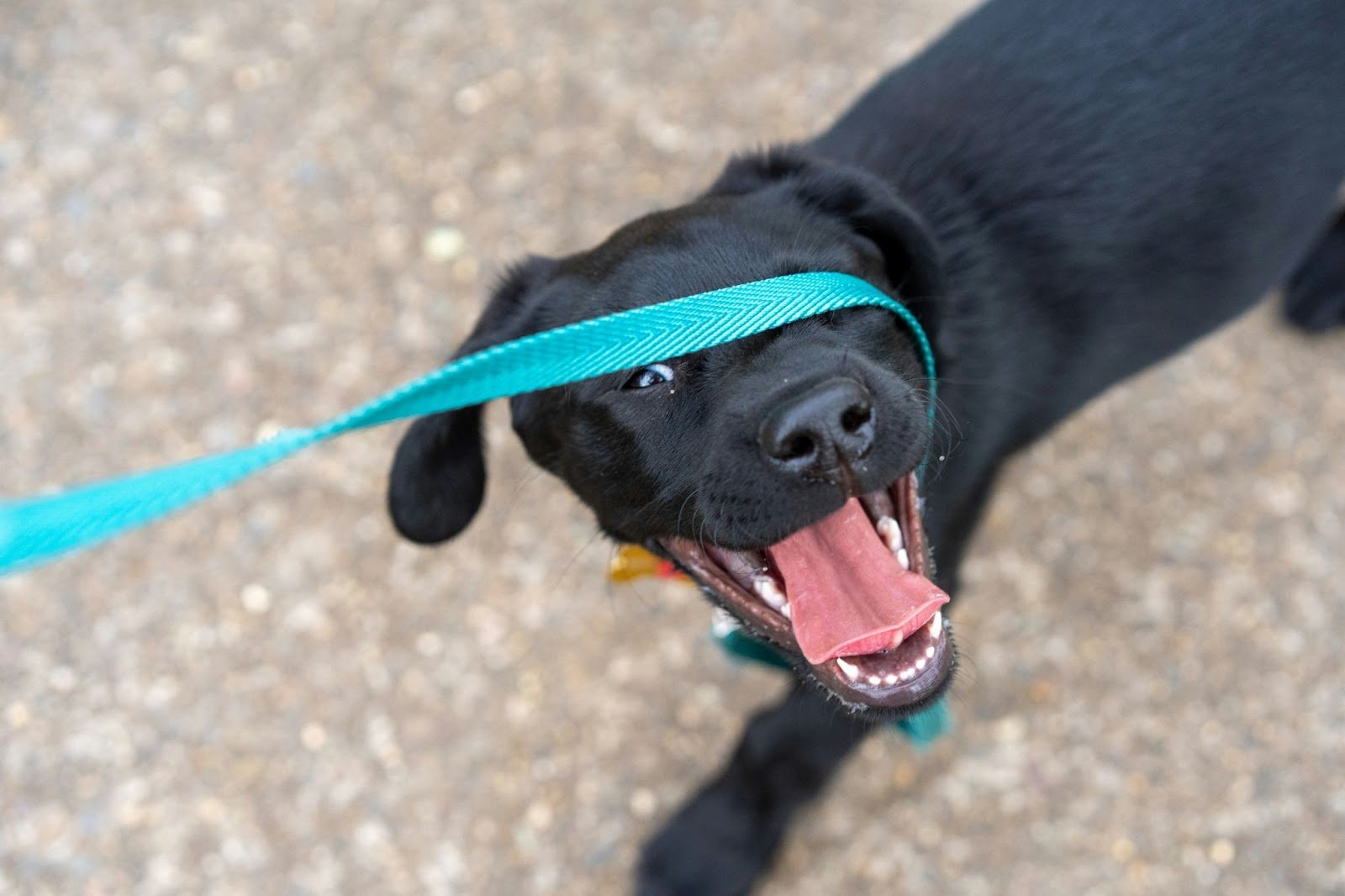New puppy ownership fosters many questions, but one of the most common is when to start leash training a puppy. Leash training is a fundamental aspect of responsible dog ownership, providing safety for the dog and its handler and fostering a strong bond between them. A well-trained dog on a leash is a pleasure to walk and can safely interact with other people and animals. For an in-depth look at leash training, refer to our detailed guide on how to leash train a dog.
When to Start Leash Training:
The ideal time to start leash training a puppy is between 8 and 10 weeks of age. During these formative weeks, puppies are exceptionally open to new experiences and exploring their environment. This stage in a puppy’s life is characterized by rapid cognitive development, making it an ideal time to introduce structured learning activities like leash training. Starting early capitalizes on their natural curiosity to learn and integrates important socialization skills. Puppies trained at this age learn to adapt to various stimuli and environments, which is crucial for their overall behavioral development.
Moreover, early training sets the groundwork for smoother progression in more advanced training stages as the puppy matures. It helps establish basic commands and walking etiquette before undesirable habits can form. Since puppies have inherently short attention spans these early training sessions remain brief, engaging, and highly positive. Utilize treats and playful interaction during training to enhance focus and retention of the lessons. Additionally, frequent, short sessions help reinforce behaviors and commands by providing consistent reminders of expected conduct without overwhelming the young dog.
Despite the benefits of starting early, it is equally important to approach puppy training with flexibility and patience. Puppies at 8 to 10 weeks are still very young, and their physical and mental capacities are limited. They may become tired or distracted easily, and pushing them too hard can lead to frustration. Therefore, setting realistic goals and celebrating small achievements during these initial stages will ensure the training remains a positive and enjoyable experience for the puppy.
Leash Training Essentials for Your Puppy:
Before you begin leash training, you’ll need a few essentials:
- A Suitable Leash and Collar: A lightweight, flat collar and a thin, light leash are perfect for a small puppy. These should be comfortable and not too heavy for their little necks.
- Treats for Rewards: High-value treats will motivate your puppy and make the learning process enjoyable.
- Patience and Consistency: Perhaps the most crucial tools are your patience and a consistent approach.
Ensure your puppy is comfortable wearing their collar before you attach the leash. Let them wear the collar for short periods around the house, gradually increasing the time as they get used to it.
Step-by-Step Guide to Leash Training a Puppy:
- Introducing the Leash and Collar: Start by letting your puppy wear the collar and leash indoors. Allow them to drag the leash around under supervision so they can get used to the weight and feel.
- Leash Handling Basics: Once your puppy is comfortable with the leash, pick up the end and hold it lightly. Follow your puppy around, allowing them some freedom, but gently guiding them if needed.
- Teach to Follow: With treats in hand, encourage your puppy to follow you while you hold the leash. Reward any moments of compliance or when your puppy looks at you while walking.
- Direction Changes and Stops: Begin incorporating direction changes into your walks, rewarding your puppy for staying with you. Practice stopping and starting, using treats to encourage and reward stopping and sitting next to you.
- Short Walks Outside: Gradually transition to short walks outside, starting in quiet, familiar environments. Keep sessions short, fun, and reward-based.

Tips for Leash Training a Puppy:
When training your puppy, it’s crucial to maintain a positive atmosphere by using positive reinforcements like treats, praise, and affectionate petting. Avoid reacting negatively to mistakes, as this can discourage your puppy. Instead, recognize that puppies learn at their own pace, so patience is key. Being patient and consistent in your training approach will help reinforce good behaviors without causing stress or fear. Additionally, keep training sessions short to hold your puppy’s attention and ensure that the process remains enjoyable for both of you. As your puppy grows more comfortable and skilled at the basics, gradually introduce them to new environments. This variety in training settings helps them learn to adapt to different situations, enhancing their overall training experience and preparing them for a wide range of future scenarios.
Common Leash Training Problems and Their Solutions:
Common leash training issues often frustrate many new pet owners, but these can be effectively managed with patience and the right techniques. One frequent problem is pulling on the leash. This occurs when a puppy tries to lead or explore too eagerly, often pulling ahead of the owner. The best way to handle this is to stop walking immediately when pulling starts. Stand still and only continue walking when the leash is slack. This teaches the puppy that pulling won’t get them further along on their walk. Additionally, rewarding the puppy with treats when they walk nicely beside you reinforces the correct behavior.
Another issue is when puppies bite the leash. Often during play or out of excitement, a puppy may grab the leash with their teeth. This behavior should be redirected early on. You can distract them with a treat or a toy, showing them that the leash is not a toy and that playtime involves different objects. Consistently redirecting their focus away from the leash and rewarding them when they let go can help curb this behavior.
A third common challenge is when a puppy refuses to move. Sometimes a puppy might feel overwhelmed or stubborn and simply sit down during a walk. It’s important not to force or drag them along as this can cause fear or injury. Instead, encourage them gently with a treat or their favorite toy, coaxing them to walk toward you. Patience is crucial here, and with time, your puppy will learn that walking is a positive and rewarding activity.
The Importance of Leash Training a Puppy:
In conclusion, starting leash training early in a puppy’s life is essential for developing a well-mannered adult dog. By introducing the leash and collar in a positive way, maintaining short, engaging training sessions, and gradually exposing your puppy to various environments, you lay a strong foundation for good behavior. Addressing common issues like pulling on the leash, biting the leash, and reluctance to move with patience and appropriate techniques ensures that each training session advances your puppy’s skills and strengthens your bond. Ultimately, the time and effort invested in leash training are rewarded with a confident, happy dog that is a pleasure to walk, enhancing the joy and companionship of your relationship.


